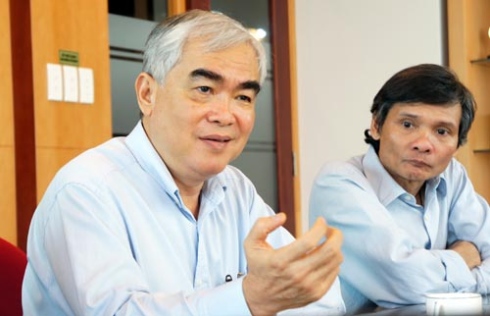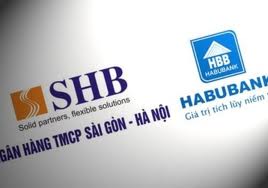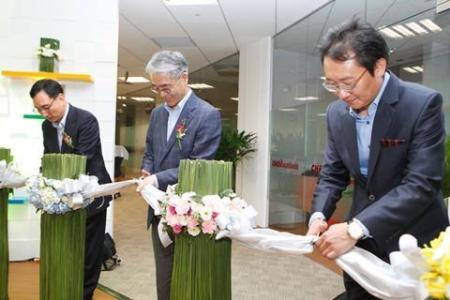Insider reveals info behind Sacombank acquisition
Insider reveals info behind Sacombank acquisition
Around six months after the successful acquisition deal of Sacombank, Eximbank’s Chairman Le Hung Dung, representing the group of major shareholders involved in the M&A deal, shared some interesting backstage information about the deal with Dau Tu Chung Khoannewspaper.

Tuoitrenews provides the English translation of his Vietnamese interview:
Early in 2012, the Vietnam Export-Import Commercial Joint Stock Bank (Eximbank) suddenly announced to acquire a 9.73 percent stake in Sai Gon Thuong Tin Commercial Joint Stock Bank (Sacombank) from the Australia-New Zealand Banking Group (ANZ). How was the deal initiated?
It all started at a meeting of Eximbank’s board of directors on July 15, 2011 in Da Lat where the board of directors discussed the possibility of financial investment in Sacombank, as ANZ, a strategic shareholder of Sacombank, contacted the bank about a month earlier to invite Eximbank to acquire 9.73 percent Sacombank’s stake they were holding.
ANZ’s offering rate was VND16,000 per share, VND4,000 per share higher than the current market price of Sacombank (coded STB).
During the meeting, the Eximbank board analyzed that as Sacombank is a leading local commercial bank, even though Eximbank bought the shares at the price that was 30 percent higher, the bank could still make profits, and even at hefty rates if excluding all costs, 1-2 years afterwards when the stock market recovers.
Not to mention being a major shareholder of a leading commercial bank like Sacombank could enhance Eximbank's position on the Vietnamese financial market.
Has ANZ mentioned the reason they wanted to divest from Sacombank?
In realizing the deal, we have asked the representatives of ANZ two questions. The first one was the reason for divestment and the second one was why ANZ chose us instead of selling to the bank’s founding shareholders, as Dragon Capital did.
For the first question, they refused to answer.
With the second question, they said they have scanned through Eximbank before contacting us. They want to sell the stake to a capable and reliable partner to replace them at Sacombank.
It should be added that the offer and negotiation for finalizing the transfer of shares to Eximbank were entirely conducted by authorized representatives of ANZ in its Australian headquarters, and no ANZ personnel in Vietnam participated in the negotiation process. They were just notified only after everything was finalized.
Eximbank itself was among the biggest local commercial banks, why did the bank invest in Sacombank?
In recent years, Eximbank has risen to become one of the leading commercial banks in Vietnam. By the end of 2011, Eximbank’s registered capital, equity, and total assets were at VND12.355 trillion ($593 million), VND16.3 trillion, and VND183 trillion ($8.78 billion), respectively.
Eximbank often held about VND2 trillion in cash for investing activities. With financial capability enhanced in recent years, Eximbank board recognized the need to diversify and restructure our capital, rather than just focusing on offering credit.
Eximbank’s board highly evaluated Sacombank as a leading commercial bank with extensive retail network, a variety of financial products, modern information technology system, and well-trained personnel.
As a result, ANZ divestment in Sacombank is a good opportunity for Eximbank to invest in a field that we have expertise in, so we did not miss the chance. Of course, the acquisition must be approved by the State Bank of Vietnam.
So the investment in Sacombank is purely for financial investment purpose or for any other purpose?
At that time, we proposed two alternatives.
The first one is purely a financial investment: we will sell the Sacombank shares when we find it profitable enough, meaning the sales must meet our profit expectations.
This is the initial target.
The second one is a strategic investment: we considered the ability to merge the two banks into one when they meet all the necessary conditions.
Following this scenario, by around 2015, Vietnam will have a joint stock commercial bank with a registered capital of around VND30 trillion, with about 600 branches spreading across the country.
For the global integration in the banking industry of Vietnam, I think the domestic financial market needs such large-scale commercial banks.
If this scenario occurs, it will be consistent with the policy of restructuring the banking system in order to reduce the number of banks and increase the financial strength of remaining banks.
There were also rumors that Ms. Nguyen Thanh Phuong, chairwoman of VietCapital Commercial Joint Stock Bank, joined in the acquisition. As an insider, can you share information on this issue?
Since Sacombank is a major bank with recent changes in the shareholding structure, this rumor may have stemmed from pure conjecture: i.e in order to acquire Sacombank there must be someone with big bags of money and the ability to hide the origin of the money and hide the identity of its real owner.
It can be easily recognized that those who spread this rumor really have no understanding of finance. A VND1 billion in cash is enormous, so we cannot have some trillions of dong transferred from one place to another without leaving any trace on the books.
How could the transfer of such a huge amount of money fail to be recorded and be hidden from the eyes of shareholders?
With my understanding of Sacombank, I personally confirmed that Ms. Nguyen Thanh Phuong and VietCapital Commercial Joint Stock Bank do not own any shares of STB, in any form whatsoever.
We can easily check this through the list of shareholders of STB on the stock market.
What is your role at Sacombank now?
Eximbank is now a major shareholder in Sacombank with a 9.73 percent stake.
As a representative of major shareholders, I will be invited to attend important meetings in Sacombank or those related to Sacombank.
How has Sacombank been performing after almost half a year since the acquisition?
In recent years, Sacombank has been one of the leading commercial banks in Vietnam.
However, it must be frankly admitted that, in addition to the current advantages of Sacombank as I just mentioned, Sacombank administrative activities actually have many issues leading to the divestments of many strategic shareholders engaged in it for many years, such as Dragon Capital, REE, and ANZ.
As a major shareholder, also representing other shareholders to participate in Sacombank in late May to present, we have done two things: hiring an independent auditor to clarify the financial situation of Sacombank Securities (SBS) from 2009 to present and clarifying the past financial picture of Sacombank, especially the period from 2011 to May 26, 2012, the date of the annual shareholders’ meeting.
In 2012, Sacombank expected profits to be close to its VND3.4 trillion plan, as it had to solve some financial problems existing before the acquisition.
Concerning matters of public concern as to the source of money used to buy shares to change the ownership structure at Sacombank, Truong Van Phuoc, general director of Eximbank, once said: of course, the money is from the banking system.
Another popular question is: who has Eximbank lent to, but this question is not as important as asking if the lending activity is legal.
As each bank has a room of 20 percent of chartered capital for lending for securities investment, if the borrower has a good business plan and collateral, there is no reason why a credit institution could refuse.
With a chartered capital of VND12.355 trillion, our room for credit securities is equivalent to about VND2.5 trillion.
Within this limit, Eximbank has loaned to thousands of individuals and hundreds of companies for securities trading. If asked whether Eximbank has offered loans for buying Sacombank shares or not, the straightforward answer is yes.
In lending, we just pay attention to collaterals, while the portfolios are decided by customers.
Eximbank offers credit when the borrower has collateral for the loan in accordance with the law.
tuoitrenews




















